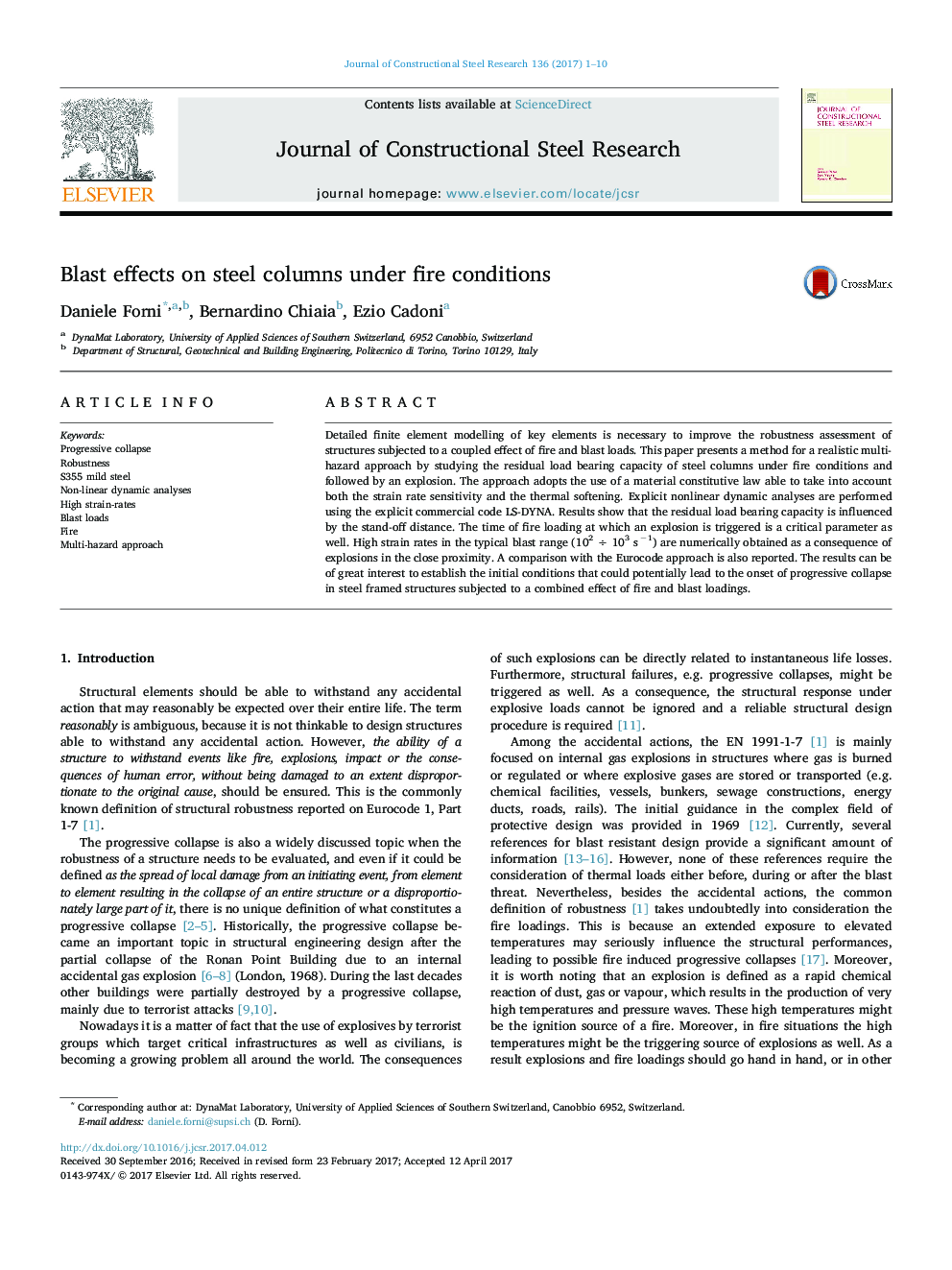| Article ID | Journal | Published Year | Pages | File Type |
|---|---|---|---|---|
| 4923274 | Journal of Constructional Steel Research | 2017 | 10 Pages |
Abstract
Detailed finite element modelling of key elements is necessary to improve the robustness assessment of structures subjected to a coupled effect of fire and blast loads. This paper presents a method for a realistic multi-hazard approach by studying the residual load bearing capacity of steel columns under fire conditions and followed by an explosion. The approach adopts the use of a material constitutive law able to take into account both the strain rate sensitivity and the thermal softening. Explicit nonlinear dynamic analyses are performed using the explicit commercial code LS-DYNA. Results show that the residual load bearing capacity is influenced by the stand-off distance. The time of fire loading at which an explosion is triggered is a critical parameter as well. High strain rates in the typical blast range (102 ÷ 103 s â1) are numerically obtained as a consequence of explosions in the close proximity. A comparison with the Eurocode approach is also reported. The results can be of great interest to establish the initial conditions that could potentially lead to the onset of progressive collapse in steel framed structures subjected to a combined effect of fire and blast loadings.
Related Topics
Physical Sciences and Engineering
Engineering
Civil and Structural Engineering
Authors
Daniele Forni, Bernardino Chiaia, Ezio Cadoni,
